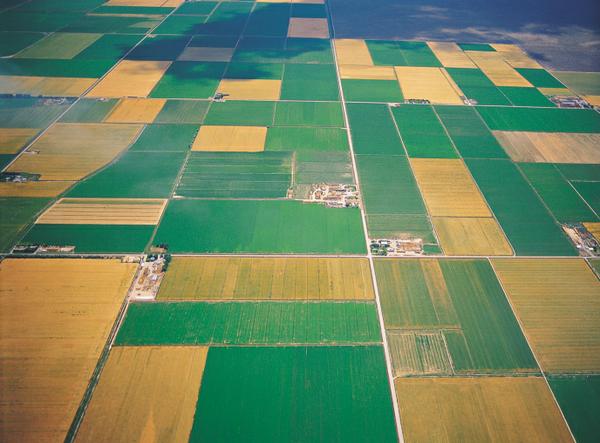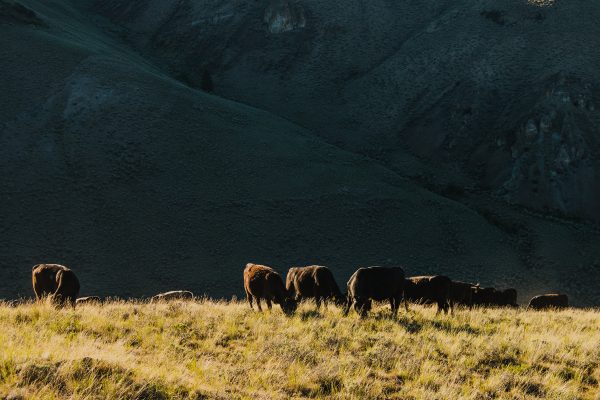The field was curiously brown in the height of the green season. It was early August, and the stand of dead-looking meadow grass stood in grim contrast to the verdant fields all around it. Despite its tawny complexion, my neighbor Tom swung the gate open, and 96 head of his hungry cows and their calves took off through the constriction between fields like liquid through a funnel.
They were expecting lush grass.
The cows and calves wandered around the dense forage cautiously at first. It wasn’t quite what they expected—that was certain. But after some tentative sniffing and tasting, they finally set their tongues to work, tearing the tender and thick grass off the field.
“They’ll get it cleaned off,” said Tom, under the shade of his worn Stetson. “It’s only going to take a day or so. They might not want to really go after that brown feed, but they’ll slick it off quick. Then we can get to planting.”
I was still learning (I still am), so I was trying to keep an open mind. It was the late eighties and the idea of no-till farming was rapidly gaining momentum, and it finally was hitting Lemhi County, Idaho. Bob Thomas of Salmon owned a John Deere no-till grain drill, or planter, and neighbor Sam Capps could be seen operating it throughout the Valley on a custom basis.
The idea was that after spraying a field with Roundup, or glyphosate herbicide, a rancher could fill the seed bins of the no-till drill and literally knife the seed into the soil through the now-dead sod layer, and save the steps of plowing, disking and harrowing the land. One step, and the seed would be in the ground and ready to germinate. The chemical in Roundup was the perfect partner because it killed every plant in the field by simple foliar contact.
Monsanto, the maker of Roundup, maintained that the chemical did nothing to inhibit germination of new seeds. A farmer or rancher could simply graze all the dead material off with his or her cows, exposing the soil to sunlight, so the plants could germinate and emerge.
And the whole thing worked. After the cows left, bellies full of chemically killed vegetation, within just a few days that brown field was green, and the new seed expressed to its full potential without all that work on tillage.
No-till seemed to be a life saver. It held together the soil profile, kept moisture in, got rid of competition, and reduced cost of farming by as much as 2/3rds. There were simply less passes over the field with heavy tillage equipment. In addition, Monsanto guaranteed that it was absolutely safe for cows to eat the dead plants (they still do).
It was a no-brainer, it seemed.
The only truth about it being a no-brainer is that it is believed that there’s no brain power needed. The farmer or rancher didn’t have to think about it; Monsanto said it was safe for cows. My problem is that I don’t know what the truth is simply because I don’t trust the source of the “truth.” The “safe” claim comes from the chemical company that makes the substance. It reeks a little too much of “fox in charge of the henhouse” stuff.

What about other studies? Unbiased peer reviewed studies about whether or not glyphosate is safe for cows don’t exist because no government or educational institution is going to fund a study that delves into the animal toxicity of herbicides. That’s because a large percentage of their funding comes from those very companies that manufacture it (drug and agrichemical manufacturers love donating to land grant universities).
Tom’s cows did not die untimely deaths. They moved on happily to greener pastures. The grass field was perfectly converted to a monoculture of dairy quality alfalfa. Everything looked rosy.
For me, it’s more the principle of the whole thing, and that is not rosy. If we open any chemical bottle we might be unleashing an unseen agent of disturbance or even death further down the road. Perhaps Tom would lose a few percentage points on his cow conception rates. Or that the soil biology, and the future productivity of the soil would drop in response to the chemicals. Or perhaps the beef that the cows created would have chemical residue that is mutagenic in humans.

Just because we don’t know the effects doesn’t mean that they don’t exist.
The list of possibilities are endless. We’ve seen many issues with the introduction of technology or chemically manufactured compounds in our food supply, or that of animals. There isn’t several months that go by without me reading about some ill-effects of a vaccine or chemical feed additive on cattle. The article will blithely tell me stories the likes of how a “Farmer Bob’s” cows in Texas are now unsalable to anyone because of residue toxicity, and have to be destroyed.
Incinerated and buried in a pit. Cows are now hazmat.
And to me, it’s not worth it. I’ve been poisoned several times by agrichemicals. Thank God my kids are normal (although they would probably maintain that I am not). Caryl likely drank a regular dose of Atrazine in her drinking water being raised in the chemigated corn-belt. We’re still alive, however, and don’t plan on dying anytime soon.
But the risks are real.
Bottom line: We grow food. For real people, many of whom have become friends. They (you) trust us.

I remember I was at a rancher conference in Montana a little over a year ago. There were about 100 cowboys there, and we had been talking cattle and grass for 2 days, and a gal stood up on the last day and waved across the audience.
She said: “Guys, I’ve been here all of 2 days, and I find it a little ironic that in a room full of cattlemen and women, I have heard only one person mention that you raise food.” She pointed at me. “He mentioned that he grows food for people. And I find that disappointing that none of you others seem to think about ranching that way.”
She was right. American agriculture has lost their way. We put the commodity of cows on herbicide killed grass. We feed the same commodity the likes of bakery waste, chicken crap and dry distiller’s grains (the main by-product of ethanol fuel production) in concrete-lined feedlots. Or, farmers just drop the food idea entirely, and grow corn for automobile gas.

Instead, let’s send ag back into a food mindset, and treat our production as something we’d be happy to feed our friends. Or grandkids. And make it chemical-free.
Happy Trails.








Mel Kallio
Hey Glenn , about Monsanto they hood winked me for a short while . Then I said good bye , seeded the crop land to grass and never sprayed an acre again .
Monsanto , has faced and paid out many lawsuits already because of effects on people health . It will continue until they are buried or bought out I am convinced. We are turning to a times when right over might is happening . For the better of humanity . I like what you do . Happy Easter ! All is not bad .
Cindy Salo
Thanks, Glenn, for reminding us to think about what we’re doing. Cows as commodity. Growing ethanol (and high fructose corn syrup and soybean oil to be processed into “food”) on the most fertile soils in the U.S. And, “Just because we don’t know the effects doesn’t mean that they don’t exist.”